 |
| Slick and swift: Maruti's
Khattar on the shopfloor of its brand new facility at Manesar
near Gurgaon |
"When work starts here
full steam in a couple of years, producing 300,000 cars a
year, it will be the best plant in the country"
Jagdish Khattar
Managing Director/ Maruti Udyog |
It's
the first time Maruti Udyog (MUL) has allowed any journalist onto
the shopfloor of its brand new facility at Manesar near Gurgaon
and, obviously, its Managing Director Jagdish Khattar is keen
to get an endorsement of the work being done here. "Don't
you like it?" he asks, never meaning it as a question. It's
easy to say yes. It's a late September afternoon and the humidity
inside the plant is killing (you can see construction workers
still trying to finish the ducting for the plant), but to the
eye, Suzuki's newest investment in India looks beautiful. The
main assembly line is bathed in natural light as workers start
assembling the first batch of Swifts that have started to roll
off the line. Tens of red, silver and grey Swift cars roll on
hangers on the shop roof, seemingly flying from chassis assembly
point to the final assembly line. And compared to MUL's first
but much older plant in Gurgaon, the 600-acre Manesar facility
has vastly more breathing space, both inside and outside. Ask
Khattar why MUL decided to get the assembly going, although the
plant is still under construction, and he tells you matter-of-factly:
"It is because we can claim depreciation for the half year,"
he says, pausing to add for effect, "and that's a Rs 100
crore saving. When work starts here full steam in a couple of
years, producing 300,000 cars a year, it will be the best plant
in the country." The Rs 4,000-crore Manesar plant (with Rs
1,500 crore already invested), which will not just assemble Swift
cars, but fit them with diesel engines from an adjoining Rs 2,500-crore
facility, is Suzuki's attempt to ensure its continued dominance
in a passenger car market it has ruled for the last 23 years.
MUL already churns out 600,000 cars a year, and when Manesar kicks
in, the capacity will soar to 900,000.
Approximately 1,800 km south from where Khattar
stands, another ambitious and fierce automotive warrior is plotting
similar moves. A man called H.S. Lheem is so busy that he barely
has time to breath. Yet, he has kindly offered to give this reporter
a guided tour of the expansion happening at his 10-year-old facility
in Errungattukottai near Chennai. There are JCB excavators and
cement mixers all over the place, and hundreds of workers in hard
hats are trying to put up a huge new car factory in record time.
"It's not easy making a factory," says Lheem, Hyundai
Motor India's (HMIL) CEO of six months. "But what to do,
I need the cars that the new factory will make," he says
in perfectly good English. Lheem needs cars and he needs them
fast. He's got an export order of 25,000 cars, but "I just
don't have the capacity," he says almost in despair. "Thank
God, I have the garden," he suddenly says, referring to a
small bit of the plant that has been converted into a tranquil
farmhouse, where India's #3 carmaker rears poultry and pigs alongside
Korean vegetables for the Korean canteen.
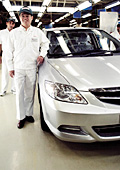 |
"Any further increases,
especially the one to 150,000, would mean that we will have
to think of a volume car"
M. Takadegawa
President & CEO/Honda Siel |
India's automotive CEOs had better keep their
yoga books and squeeze balls handy. In what could be industry's
most competitive phase yet, vehicle manufacturers have lined up
massive investments to boost capacities. Apart from MUL's Rs 9,000-crore
and Hyundai's Rs 5,000-crore investments, home-grown giant Tata
Motors has put together a war chest of Rs 10,000 crore to do everything
from developing new passenger car and commercial vehicle platforms
to launch an ultra low-cost car, billed the Rs 1-lakh car, which,
if successful, could single-handedly change the face of the industry.
Honda Motor is plonking down Rs 1,000 crore to increase its low
capacity of 50,000 units a year to 150,000 by 2008, and the plans
may include a small car; General Motors (GM) is also investing
Rs 1,400 crore, mainly in the building of a new plant and the
launch of a small car, the Spark, that could increase the troubled
automotive behemoth's market share in India from an insignificant
3 per cent to something more respectable; Ford too, which has
hit a sweet-spot with its sedan Fiesta, has a modest capex plan
of Rs 400 crore, aimed at debottlenecking its plant in Chennai;
Mahindra & Mahindra (M&M), the tractor-to-SUV major, has
tied up with Carlos Ghosn-led Renault-Nissan to launch a sedan,
Logan, by mid-2007. Finally, Toyota Motors, which, in keeping
with its quiet style, hasn't yet disclosed its investment plans,
has a stated objective of capturing a 10 per cent share of the
car market. If no one's laughing at Toyota's bid to increase market
share five-fold (yes, its current share is a modest 2 per cent),
it's because, well, we are talking of Toyota here. The Japanese
giant has gone from being a nobody to, pretty soon, the world's
biggest vehicle manufacturer.
Shifting Gears
Do the numbers, and the industry's investment
figures tot up to more than Rs 30,000 crore. That's not too much
less than the investment already sunk into the industry over the
years, but it's significant for what it will do to the industry
capacity: it's simply going to double it. Why are car majors falling
over each other to make the investments? Blame it on the market
boom. Even as recently as five years ago, annual vehicle sales
in India added up to a modest seven lakh a year. Last year, that
figure stood at 11 lakh, of which cars accounted for 80 per cent,
representing a two-fold growth in that time. This financial year,
car sales are expected to surge 10-15 per cent, and by 2010, the
size is projected to double to 2 million. Seconds a Scotiabank
report on the industry: "Rising incomes and rapid growth
in the 20-64-year-old age group suggest that car sales in India
could double to 2 million units by the end of the decade."
INVESTMENTS UNPLUGGED
By 2010, the demand for cars is
expected to almost double to 2 million a year. No wonder,
manufacturers are racing to boost capacities. |
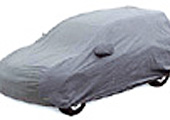 Tata
Motors Tata
Motors
Proposed Investment: Rs
10,000 crore
Reason: Build new platforms for passenger cars,
commercial vehicles and launch the ultra-small "Rs
1-lakh car". Develop all-new engines for the three
platforms, including common rail diesel engine. Possibly start
a joint venture with Fiat to develop the Ranjangaon facility
as a two-lakh-car-a-year facility. Upgrade existing range
of commercial vehicles.
Capacity by 2010: Approx. 5 lakh a year for passenger
cars, 2.5 lakh for the ultra-small car and 4 lakh a year for
commercial vehicles.
What's at Stake? Tata Motors has a little over 16
per cent of the passenger car market, but its position will
come under threat once Maruti launches its diesel Swift. Also,
compared to its global rivals, Tata Motors has limited access
to technology. Hence, the Fiat tie-up.
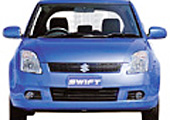 Maruti
Udyog Maruti
Udyog
Proposed Investment*: Rs
9,000 crore
Reason: Upgrade the 5.5-lakh-a-year Gurgaon plant, set
up a diesel engine plant at Manesar (near Gurgaon) and increase
capacity at Manesar from 1 lakh to 3 lakh cars a year.
Capacity by 2010: Approx. 10 lakh a year
What's at Stake? MUL is the market leader with 44.25
per cent share, but globally its parent Suzuki is a small
player compared to Toyota and Honda. India fetches 12 per
cent of Suzuki's global revenues.
*Does not include a proposed Rs 2,500-crore investment in
"outsourced manufacturing" for Nissan
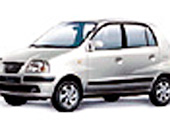 Hyundai
Motor India Hyundai
Motor India
Proposed Investment:
Rs 5,000 crore
Reason: Set up a second manufacturing plant beside
the existing plant to double capacity to 600,000 units a
year. Also develop a new small engine plant.
Capacity by 2010: 6 lakh a year
What's at Stake? It's right behind #2 Tata Motors,
although it ranks #6 globally. India's largest car exporter
(in terms of value), HMIL doesn't have a global manufacturing
footprint unlike Toyota, and half of its production by 2008
will be exported. By 2010, Hyundai wants to be #5 globally.
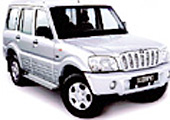 Mahindra
& Mahindra Mahindra
& Mahindra
Proposed Investment: Rs
1,000 crore
Reason: Expand capacity at the Nashik facility for production
of Renault sedan, Logan, and increase production of its
own SUV, Scorpio. Develop an all-new multi-purpose vehicle,
Ingenio, by mid-2007.
Capacity by 2010: Approx. 2.5 lakh a year
What's at Stake? Like Tata Motors, M&M needs
access to technology, and the Renault tie-up will take care
of that to an extent. It already exports the Scorpio to
South Africa, Uruguay and Europe, but will remain a niche
player. It has a current domestic market share of 6.38 per
cent.
General Motors India
Proposed Investment: Rs
1,380 crore
Reason: Set up a new, 1.4-lakh-a-year manufacturing
facility at Talegaon near Pune, primarily for the small
car, Spark. Increase capacity of existing facility at Halol
(Gujarat) to 85,000 units a year from 50,000.
Capacity by 2010: 2.25 lakh a year
What's at Stake? The global #1 company is precariously
positioned. In India it has just 3 per cent share, but the
launch of Spark next year may increase its share significantly.
GM is reportedly considering an alliance with Renault-Nissan
globally, but its India fortunes will perhaps be tied to
the developments at Detroit.
Honda Siel
Proposed Investment: Rs
920 crore
Reason: Increase capacity from 60,000 to 100,000 units
by 2008, and then to 150,000 by 2010. Launch a small car.
Capacity by 2010: 1.5 lakh a year
What's at Stake? It has less than 5 per cent share
of the Indian car market, although it ranks #9 globally.
But given that Honda is best-known for its fuel-efficient
engines, it may be sitting in a sweet spot. A small car
is what Honda needs in India.
Ford Motor India
Proposed Investment: Rs
345 crore
Reason: Increase production to 100,000 units a year
from 50,000 currently.
Capacity by 2010: Approx. 1.5 lakh a year
What's at Stake? Like GM, Ford is in bad shape in
the US. However, its international ventures are profitable,
and Ford has been more willing to launch "India-specific"
cars. It has less than 3 per cent of the Indian car market,
and its plans will remain hamstrung by the parent's performance
in the US.
Toyota Kirloskar Motor
Proposed Investment: N.A.
What's at Stake? A relative late-comer to the Indian
market, Toyota wants to grab a 10 per cent share by 2010
(current share: 3.94 per cent). That means a capacity of
at least 2 lakh by 2010. Some analysts expect the investment
to be closer to Rs 3,000 crore.
|
That puts India
in sharp contrast to developed markets elsewhere in the world.
The us is the biggest market and will continue to remain so for
a long time, but its growth seems to be stagnating at about 17
million vehicles a year; Western Europe is stagnant too and expected
to remain so at least until next year. So, while there's an estimated
20 per cent overcapacity in the industry globally, markets like
India and China are still underfed. And as car companies respond
to falling profits and flat markets, they'll have even more reason
to expand in low-cost countries like India, turning it into a
sourcing hub of sorts.
 |
"Our Chairman came to
India and he announced that we have to get a 10 per cent market
share by 2010"
A. Toyoshima
Managing Director/Toyota Kirloskar |
For instance, half of the 600,000 cars that
HMIL plans to roll out by 2008 will be exported. Suzuki is weighing
a tie-up with Nissan to manufacture up to 350,000 cars in India
that will be exported back to Ghosn's company. Its own exports
added, by 2010 MUL could be shipping off more than 400,000 cars
a year to global markets. So, just between MUL and HMIL as many
cars will get exported as what was getting sold domestically barely
five years ago. "This", declares Khattar, "is the
biggest thing to happen to the Indian automotive industry. We
are going to become a global destination for outsourced automobile
manufacturing."
In the process, don't be surprised if the
industry starts looking more and more global. For, the current
stack-up doesn't quite reflect the global order. Suzuki is the
market leader by far with a 45 per cent share, although globally
it ranks a distant #11. The #2 is Tata Motors, which still is
a one-car-platform company, if not a one-car company, and is followed
closely by HMIL, rapidly moving up but #6 worldwide (as the Hyundai-Kia
combine). GM, Ford and DaimlerChrysler, all loss-making and losing
market share in the us, may never become top players in the country,
but Toyota and Honda definitely seem intent and capable. In fact,
a PricewaterhouseCoopers (PWC) study predicts that by 2010, the
combined market shares of the top three manufacturers in the light
passenger car market (as opposed to passenger vehicles, which
include utility vehicles, multi-purpose vehicles, and luxury cars)
will drop from 90 per cent at the end of 2005 to 73 per cent in
2010, with MUL seeing the biggest decline.
Playing Different Stakes
 |
"By 2008-09, we would
have capacity in excess of 225,000 units. I don't think you
will be able to call us a small player then"
Rajeev Chaba
Country Head/General Motors India |
The report may not be way off the mark. Competitive
contours of the industry are already coming into relief, and it
is clear what's at stake for each of the players. Let's start
with Suzuki and Hyundai. When they first came to India, 13 years
apart, both were relatively unknown brands, but have since been
able to turn India into strategic markets for themselves. In the
case of the Japanese company, MUL accounts for 12 per cent of
its global consolidated revenues and close to 50 per cent of its
consolidated profits and, by 2008, a third of its production capacity
will be based in India too. So Suzuki will do everything in its
power to keep its golden goose from getting killed. Hyundai, on
the other hand, manufactures only in India, outside of Korea,
China, Turkey and America. In one sense, therefore, India is doubly
more important to it. How are they fortifying their positions?
By building massive capacities, with an eye on exports. It's a
no-brainer what this sort of scale and marketing flexibility will
mean to the two players: First of all, by churning out cars in
large numbers, they will be able to spread their fixed costs over
larger units and price them competitively in the domestic market.
Should there be a slump in car sales in India,
they'll be the last to get hit, since they'll have the export
market to cushion the blow. The others may have to drop prices
and suffer losses. So, if Khattar and Lheem don't seem ruffled
by the PWC study, it's possibly because of this reason. After
all, by 2010, when sales double to 2 million, Maruti and Hyundai
combined will have a capacity of 1.6 million.
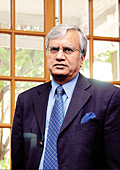 |
"We will not change the
paradigm of the car. But we do hope to change the way people
buy cars and make them more affordable"
Ravi Kant
Managing Director/Tata Motors |
At the other end of competitive spectrum will
be the two Indian players, Tata Motors and M&M. Despite the
initial hiccups, the former's indigenously-developed small car,
the Indica, proved to be a big hit because it was the only diesel
car in its segment. To be sure, MUL did try to dislodge Tata Motors
from its perch with a diesel Zen, but the move failed because
of the Zen's more expensive pricing. Now, however, it is planning
to hit back with a force that may knock Indica's breath out. Suzuki's
snazzy Swift is about to hit the market in a second avatar, as
a diesel car, rolled off the Manesar plant. It is anybody's guess
if the diesel Swift will sidetrack the Indica, but it is obvious
that it is something Tata Motors needs to worry about.
But there are two reasons why Tata's passenger
car business may not roll over and play dead: One, in an investment
that's even bigger than Suzuki's at Rs 10,000 crore, the company
is upgrading its entire range of vehicles-from the Indica to SUV
Safari to 40-tonne commercial vehicles. At the Pune engineering
centre, work is already underway to develop new platforms and
a superior, common rail diesel engine. Two, and this is something
close to Chairman Ratan Tata's heart, is the Rs 1-lakh car. The
company is already testing several prototypes and scouting for
a manufacturing location. Tata has promised to roll it out by
2008, and even if it is not exactly priced at Rs 1 lakh, it could
be a game changer. It could move thousands of two-wheeler owners
to a four-wheeler. Initial estimates put the annual demand at
a staggering five lakh. "Will we change the paradigm of the
passenger car? No. But we do hope to change the way people buy
cars and make them more affordable," says Tata Motors' Managing
Director, Ravi Kant.
Maruti, which hasn't phased out the entry-level
small car, the 800, for precisely such a day, may prove to be
Tata Motors' nemesis all over again. But the latter has some aces
it can play. When Tata and his counterpart Sergio Marchionne of
Fiat inked a deal back in January this year for the Italian vehicle
maker to leverage Tata's distribution network in India, many aspects
of the deal were left open, with both men preferring to state
that "all options were open." One option that was evidently
open was the possibility of Fiat and Tata setting up a joint manufacturing
plant in India and evidently (even though the deal has not been
signed as yet) the two companies are looking at setting up a joint-plant
at Ranjangaon near Ahmednagar. "If, and I wish to highlight
'if', such a plant gets built, we will look at using some capacity
from that plant", says Rajiv Dube, Senior Vice President
(Passenger Cars), Tata Motors. "Maybe 30,000 units a year
could be Tata vehicles." He even confirmed the possibility
of the Tatas' leveraging Fiat's diesel engine technology. "Even
though we have developed our own in-house common-rail engines
for the Indica, the Fiat brand will obviously help us," says
Dube.
CARS ROUND THE CORNER
More than a dozen cars will be
launched by the end of next year. |
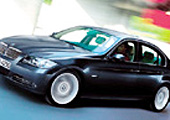 |
 |
| Driving in: BMW and Logan (top) |
2006
Maruti's New Zen
1.1 litre petrol engine (shared with the WagonR)
Expected price: Rs 3.5-4 lakh
Maruti Swift Diesel
1.3 litre diesel common-rail engine
Expected price: Rs 5-5.5 lakh
Hyundai Diesel Sonata Embera
2.2/2.4 litre diesel common-rail engine
Expected price: Rs 15-17 lakh
Chevrolet Aveo UVA
1.2/1.4 litre petrol engine
Expected price: Rs 4.5-5.5 lakh
Ford Fiesta CNG
Factory-fitted CNG conversion Rs 30-40,000 more than standard
models
2007
Mahindra-Renault Logan
1.5/1.6 litre petrol/diesel engines
Expected price: Rs 4.5-6 lakh
Chevrolet Spark
1.0/1.2 litre petrol engine
Expected price: Rs 3-4 lakh
Maruti Sedan (Esteem/Baleno replacement)
1.3/1.5 litre petrol engine/1.3 litre diesel
Expected price: Rs 5-7 lakh
BMW 3/5/7 Series (made in India)
Range of engines: Expected price: Rs 20 lakh
(3 series) Rs 35 lakh (5 series) Rs 70 lakh (7 series)
Skoda Fabia (hatchback/notchback)
1.2/1.4 litre petrol/diesel engines
Expected price: Rs 5-8 lakh
Ford Mondeo (replacing current model)
2/2.5, petrol/diesel engine
Expected price: Rs 15-18 lakh
Hyundai Getz Diesel
1.3 litre diesel engine
Expected price: Rs 5-5.5 lakh
Fiat Grande Punto
1.2 litre petrol/1.3 litre diesel
Expected price: Rs 4-5 lakh
|
At the least, Tata Motors is no push-over.
It acquired Daewoo's commercial vehicles business in 2004, and
exports 20,000 Indicas and 30,000 trucks every year to countries
in Africa, Europe and neighbouring saarc countries. And that's
the sort of strength, the other home-grown automotive major, M&M,
plans to get to. It's on the verge of launching the Renault Logan
(even though the car is actually a Dacia Logan, a Romanian subsidiary
of Renault), and is developing an all-new multi-purpose vehicle,
codenamed the Ingenio. After the roaring success of the SUV Scorpio,
developed on a shoestring budget of Rs 600 crore, no one doubts
M&M's engineering prowess anymore. But Pawan Goenka, Managing
Director of M&M, knows better than to rest his ambitions on
a sedan, and especially one not built by his company (although
the engineering involved in converting the car from left hand
to right hand drive was done in-house by M&M). So Ingenio
will be important for M&M. "I can't tell you anything
about it at present," says Goenka. Still, it will be some
time before M&M even gets to where Tata Motors is at present.
Mind The Japs
 |
"It's not easy making
a factory. But what to do, I need the cars that the new factory
will make"
H.S. Lheem
CEO/Hyundai Motor India |
What the two Indian players, and even the
little Japanese and the big Korean, need to fear are Toyota and
Honda. But first, a quick look at what the Detroit giants have
planned for India. After years of putting China ahead of India
(no surprise; Chinese buy 2.2 million passenger vehicles a year,
compared to the 1.1 million bought by Indians last year), they
have started taking the democratic market more seriously. Ford's
former CEO, but current Chairman, Bill Ford came down to India
in late 2005 to launch the Fiesta, a car that has transformed
the car maker's fortunes in India (its growth has doubled so far
this year). Says Ford's India boss, Arvind Mathew: "We could
and should have done better in India, and I believe that for a
few years after the Ikon, we had a very limited product portfolio.
We should have had another vehicle; we should have launched something
around 2001."
Its compatriot GM hasn't lacked new launches,
but unfortunately they have all been in segments where there are
limited volumes. But in August this year, GM announced a $300-million
(Rs 1,380-crore) investment in India, just days after declaring
a $1.1-billion (Rs 5,060-crore) loss globally for the second quarter.
The money will help set up a new plant to manufacture a slightly
reworked version of the former Daewoo small car, the Matiz, which
has been renamed the Spark. "We have already begun constructing
the new plant at Talegaon," says Country Head Rajeev Chaba,
adding that by 2008-09, GM would have capacity in excess of 225,000
units. "I don't think you will be able to call us a small
player then," he says.
Maybe not, but GM and everyone else included,
will have the stars of auto industry, Toyota and Honda, to worry
about. "Our Chairman (Fujio Cho) came to India and he announced
that we have to get a 10 per cent market share by 2010,"
says A. Toyoshima, Managing Director of Toyota Kirloskar Motors
(TKM). "And that is our target," he says without batting
an eye lid. In the same breath, Toyoshima, who's now spent two
years in the country, says that it would mean moving into the
"volume segment", which is small cars. "Since it
is already 2006, we will have to enter the volume segment fairly
soon," he says. Typically, Toyota is tight-lipped about its
plans, but there's no doubt that it will have to cough up large
investments. The annual capacity at TKM's Bidadi plant near Bangalore
is a meagre 50,000 units, including Corolla, Camry and the Innova.
While there is room to expand at Bidadi itself, it is possible
that Toyota decides to set up a new plant elsewhere with a capacity
of 200,000, which is what would count as a viable scale for a
small car. But what small car will it be? Toyota, of course, isn't
telling, but industry watchers expect it to be a new platform
that Toyota is developing for markets like India (the engine size
will be between 1-1.2 litre to take advantage of India's Excise
structure) Experts also estimate the required investment in a
new plant of this size at between Rs 2,000 crore and Rs 3,000
crore.
THE COMMERCIAL VEHICLES SURGE
With the economy on a roll, truck
sales are clipping. |
 |
| In high gear: Commercial vehicle
sales are up 38 per cent and rising |
Sanjiv Bajaj, executive director
(Finance), Bajaj Auto, told a group of investors in a Manhattan
hotel recently that the company was seriously exploring
the 'four wheel' option. But by that he didn't mean a passenger
car. Instead, he was talking about light commercial vehicles
like the Tata Ace. Italy's Piaggio, which runs a small three-wheeler
operation in India, plans to do the same thing. In Germany,
Anton Weinmann, Managing Director of MAN Nutzfahrzeuge,
says that he wants his new joint venture in India with Abhay
Firodia's Force Motors to power his company's exports. DaimlerChrysler
decides, after years of mulling over it, to finally launch
its commercial vehicles in India. American giant International
Trucks also goes for the JV route and ties up with a resurgent
Mahindra & Mahindra. Even Hyundai Motor India's Managing
Director H.S. Lheem looks wistfully at the commercial vehicles
market. Why? The segment grew 10 per cent last year and
has soared another 38 per cent so far this year.
But any company that wants a piece of the trucks market
must first contend with Tata Motors, which controls a whopping
two-thirds of it. "When we launched the Ace in 2005,
we created a whole new segment in the commercial vehicles
market," says Telang P.M., Tata Motors' Director of
small and light commercial vehicles. There's no doubt about
that. But as companies rush into the market, they will do
well to remember what happened after the last commercial
vehicle boom in the late 90s. Warns a Mumbai-based industry
analyst: "Even though the economy is doing well and
the market is growing, no one should be too exuberant."
It's a message worth listening to.
|
If there's any car maker in the world the
industry has learnt to take seriously, it is Toyota. So, if you
are a serious player, then you have to have matching strategies.
And the Takeo Fukui-led Honda is a serious player. In fact, despite
being the smaller of the two players, Honda is larger than Toyota
in India. Its Accord and newly-launched Civic cars outsell Toyota's
competing models (the Camry and Corolla). When Honda's Chairman
Fukui came down to India a few months ago, he declared Honda's
hand by saying that the company would invest $300 million (Rs
1,380 crore) in India. Of that, almost $200 million (Rs 920 crore)
would be invested in Honda Siel Cars India, reveals M. Takadegawa,
who oversees all of Honda's interests in India (including two-wheelers
and portable power generators). For starters, the company is doubling
capacity to 100,000 cars by the end of 2007 and plans to take
production up to 150,000 by 2008. "The first jump in production
would easily cover our current line-up, but any further increases
especially the one to 150,000 would mean that we will have to
think of a volume car (small car). I can tell you that it will
not be the Jazz/Fit, but it might be a model that is still being
developed," reveals Takedagawa.
Too Good, Too Soon?
 |
| No push-over: Tata Motors is investing
in new platforms and a common-rail diesel engine, besides
a small car |
Compared to Suzuki, HMIL and Tata Motors,
the plans of Toyota and Honda may seem modest. But don't forget
that these two companies are best known for making cautious, but
carefully calibrated moves. Other auto companies would do well
not to see everything through rose-tinted glasses. While no one
doubts that the market size will top 2 million by 2010, there
are enough potential pitfalls. "...challenges include inconsistent
government policies at the state level, low levels of investment
in product and technology development and relatively strict emission
regulations..." the PWC report says. Adds Sachin Nandgaonkar,
automotive analyst at The Boston Consulting Group (BCG): "It
is clear that customers have money to spend, and while the fantastic
numbers of the first part of the year (20 per cent growth) are
clearly unsustainable, 10 per cent year on year growth over the
next few years is quite achievable."
However, he does believe that a lot of the
numbers being bandied about might be posturing. "While the
auto sector is going to remain a prime investment destination,
it is not a 1-0 game. It is not as if someone will invest a thousand
crore or nothing at all, this is not a crore by crore business,"
he says. What that means, he explains, is that while the big manufacturers
have seen several white spaces in their line-up, they have also
seen opportunities in India as an auto-hub, besides feeling the
need to protect their turf. "Some of the numbers might be
intimidating to rivals and that's why they have been announced,
final figures may be smaller," says Nandgaonkar.
At any rate, the investments are unlikely
to be vastly smaller than the ones proposed. As far as one can
see, there are millions of Indians who are waiting to buy cars.
The twin force of growing affluence and the industry's move towards
small cars could just make the market explode. And as they say,
as long as the wheels keep turning, the money will keep churning.
|







 Tata
Motors
Tata
Motors Maruti
Udyog
Maruti
Udyog Hyundai
Motor India
Hyundai
Motor India Mahindra
& Mahindra
Mahindra
& Mahindra






